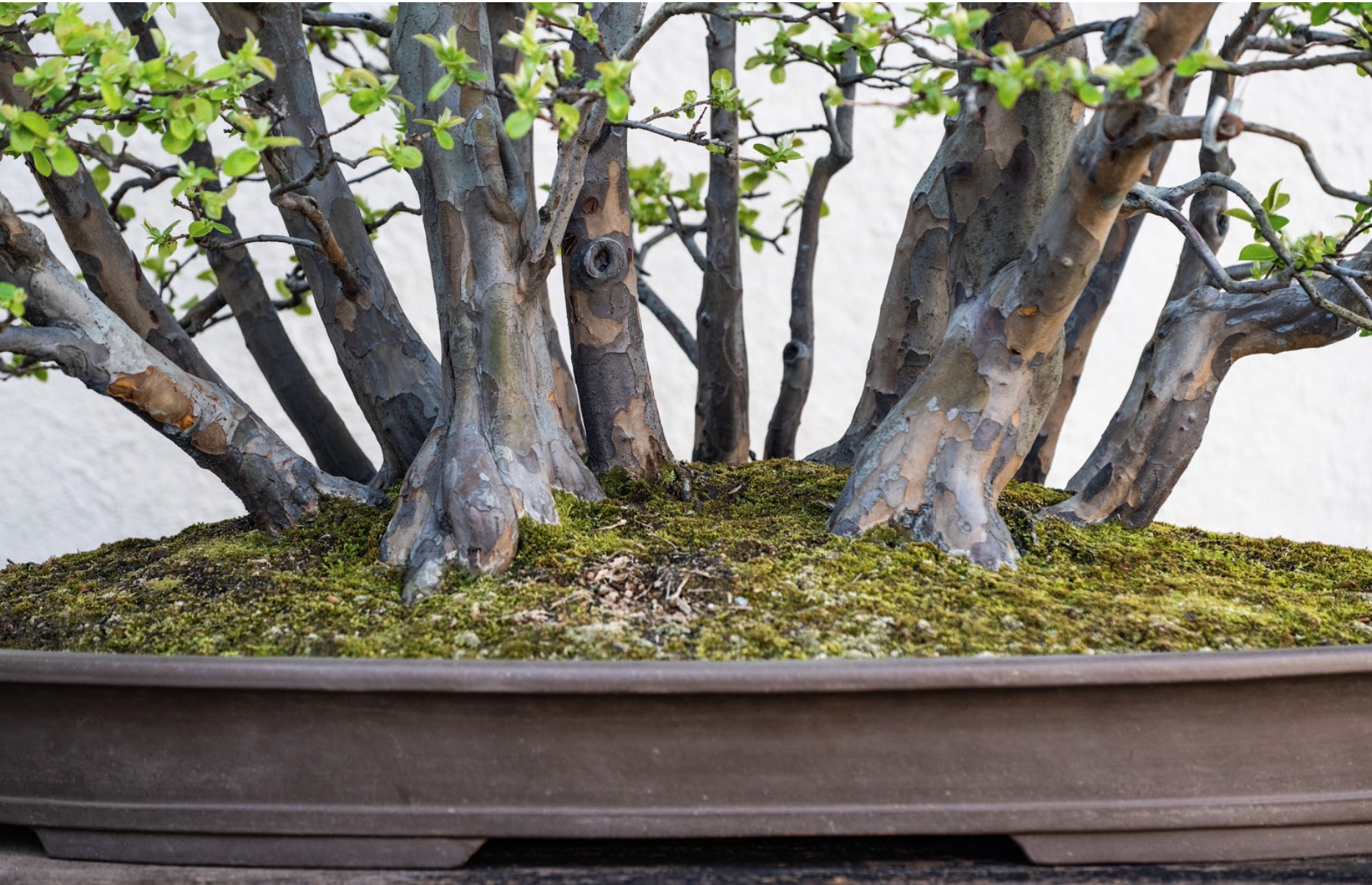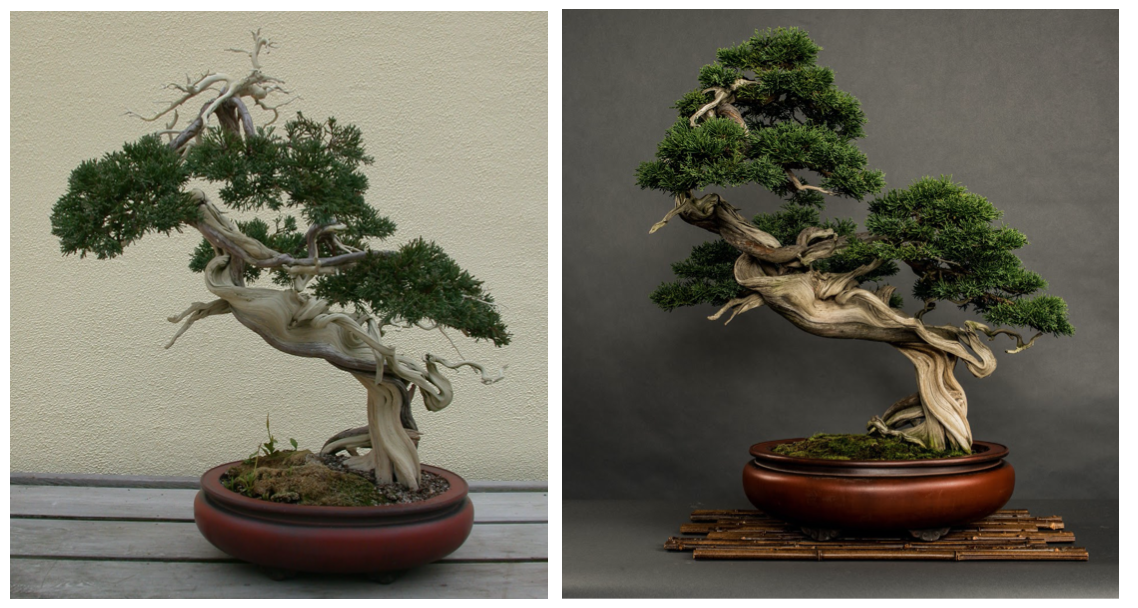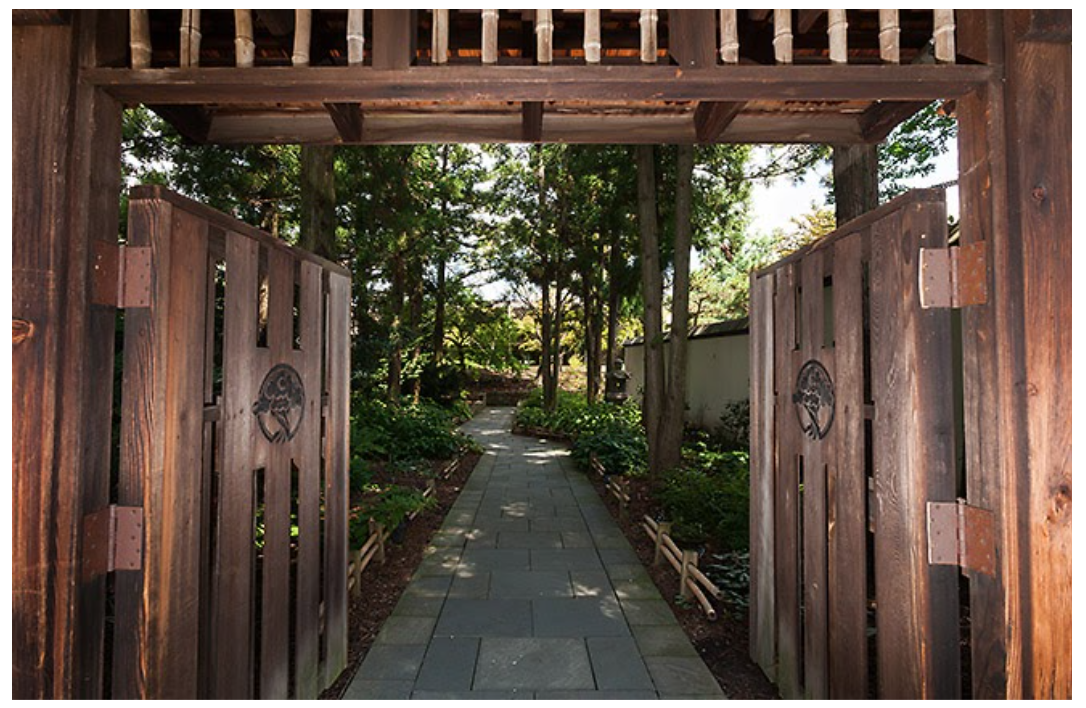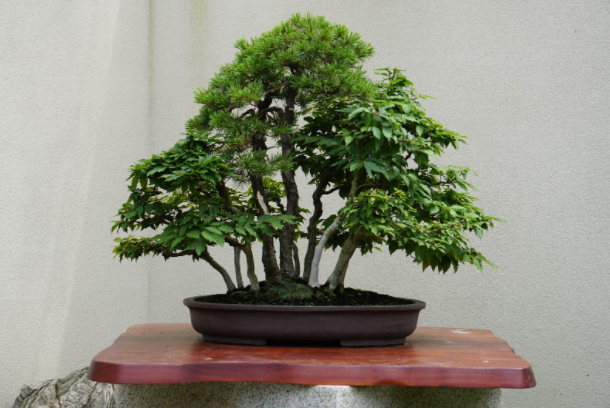Parent and child style cork bark Japanese black pine. Photo courtesy of the U.S. National Arboretum.
For this iteration of our Historical Tree Spotlight series, we unveil the history and creative process behind a special cork bark Japanese black pine ( Pinus thunbergii ‘Corticosa’), which is truly a rare specimen. It is a variation of the conventional Japanese black pine (P. thunbergii) found in coastal Japan and South Korea. The cork bark variety of black pine has an overly active cork cambium that makes an already rugged barked pine a novel wonder. The tree prefers mild climates and makes for a popular and aesthetically pleasing choice for bonsai enthusiasts.
You can check out the cork bark bonsai above at the National Bonsai and Penjing Museum. It is in a parent and child style configuration that has been in training since 1980, when two prunnings from another cork bark pine bonsai in the Museum’s collections were grafted to a Japanese black pine rootstock. The trees represent a mature parent tree in the wild that has given rise to a younger succession which has thrived under the larger tree's protection, yet reaches toward the light to become its own presence in the woodland.
Read more about the Japanese Black Pine here in our Species Spotlight.
The textured bark of the cork bark variety provides an enhanced and unique look to this bonsai classic.
“The overall ruggedness of black pines in general is valued in bonsai culture, but the cork bark has the next level of barking that really makes this rare and prized,” says Museum Curator Michael James.
One of the cork bark Japanese black pines in 1989 after being grafted by Robert Drechler. Photo courtesy of the U.S. National Arboretum.
The origin of this tree begins in 1980 with the Museum's very first Curator, Robert Drechsler, who passed away late last year. Since cork bark black pines are difficult to propagate, Drechsler used his skills as a talented horticulturist to graft a branch of the cork bark variety onto a conventional black pine rootstock. Dreschler placed the graft low on the base of the trunk, as the difference between black pine and cork bark is so dramatic that a high graft will cause an undesirable inverse taper due to the thickness of the corky bark.
The addition of a second tree was performed in 1999 by the Museum’s second Curator, Warren Hill, creating the parent and child, or twin trunk style we see today. A later curator transplanted the bonsai into a round container made by the American ceramicist, Ron Lang.
“This tree is a good example of the collaborative art that bonsai is,” says James. “The media is a living organism and has a lifespan longer than the average human. It requires multiple people in continuum to care for, shape and form.”
The main tree in 1989 before its current multi tree configuration by Warren Hill. Photo courtesy of the U.S. National Arboretum.
The Cork Bark Black Pine exemplifies a core mission of the U.S. National Arboretum, as it is a rare specimen of plant DNA. The arboretum collects, conserves and distributes plant germplasm, acting as a library of sorts. Their repository of genetic information benefits both the scientific community and the public good.
James also credits the impact of this flourishing tree to the work and influence of Robert Drechsler.
“Robert Dreschsler said, ‘we can only hope we've left something behind that will live on,’ and I think it's definitely true in his case,” says James.
Drechsler’s grafted cork barks were originally a part of the Museum’s Education Collection. What started as a bonsai experiment and tool of education has become a collaborative artistic expression. The bonsai has been removed from the Education Collection and placed into the more permanent North American Collection.



































